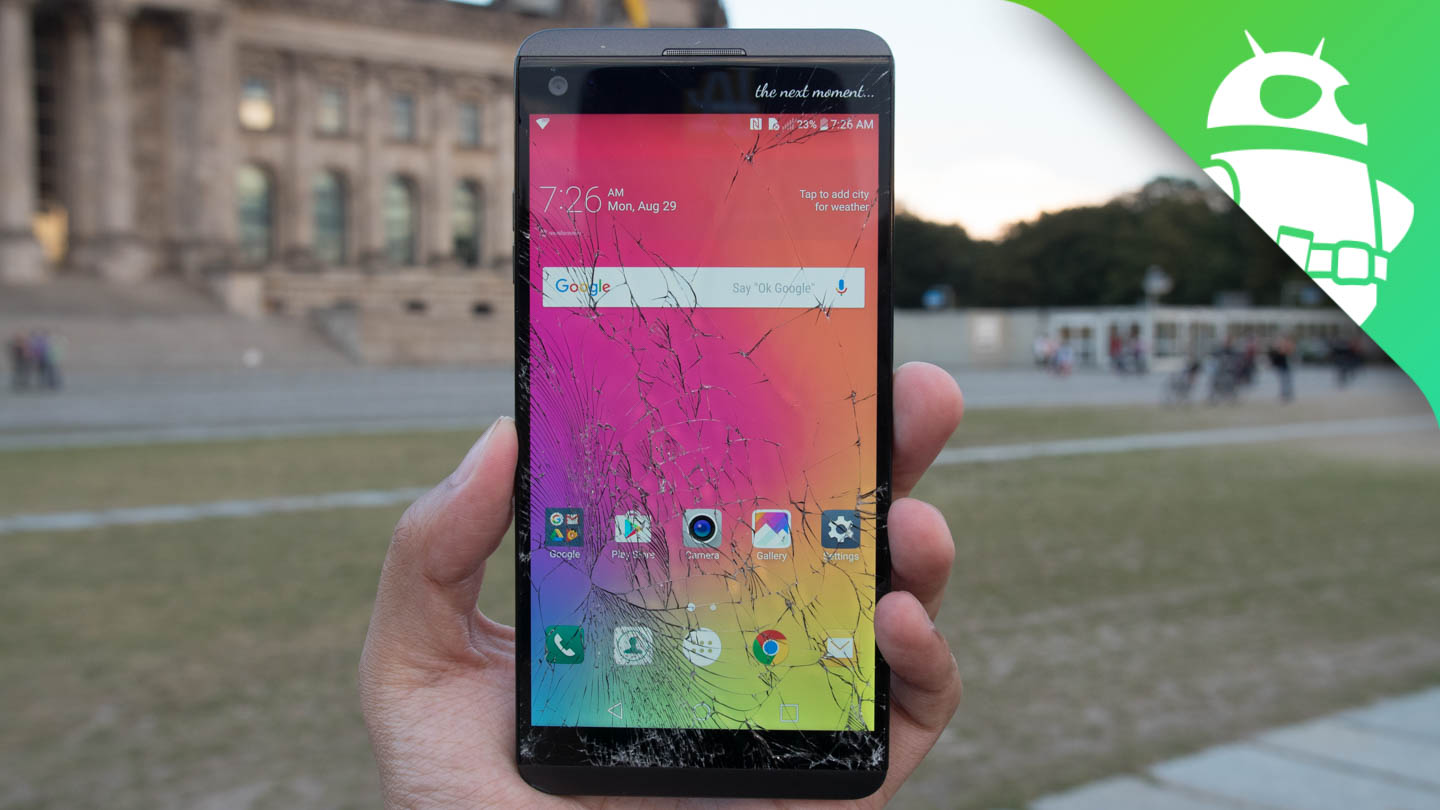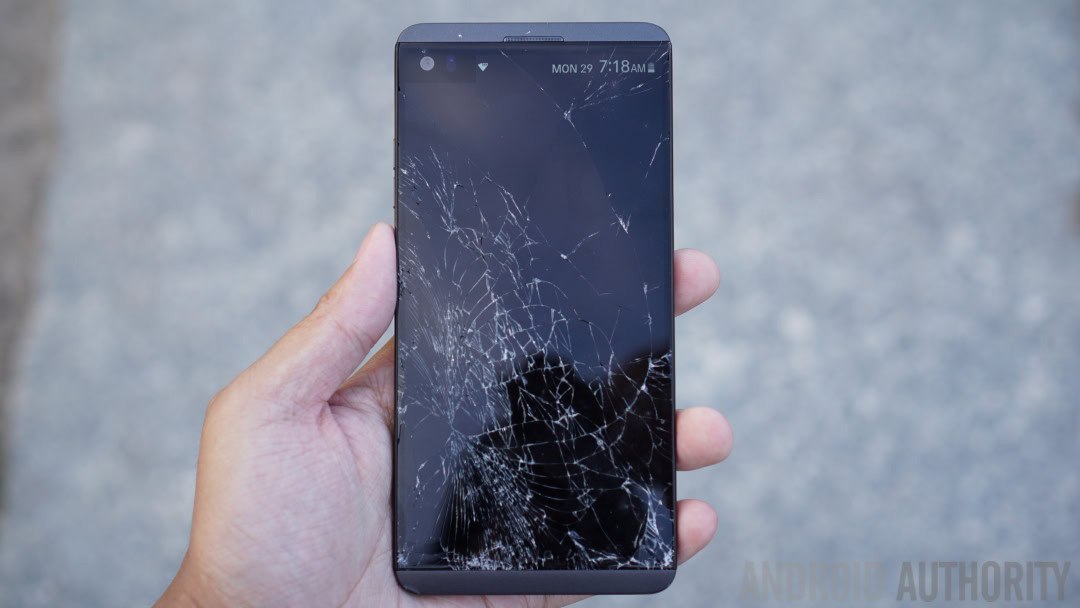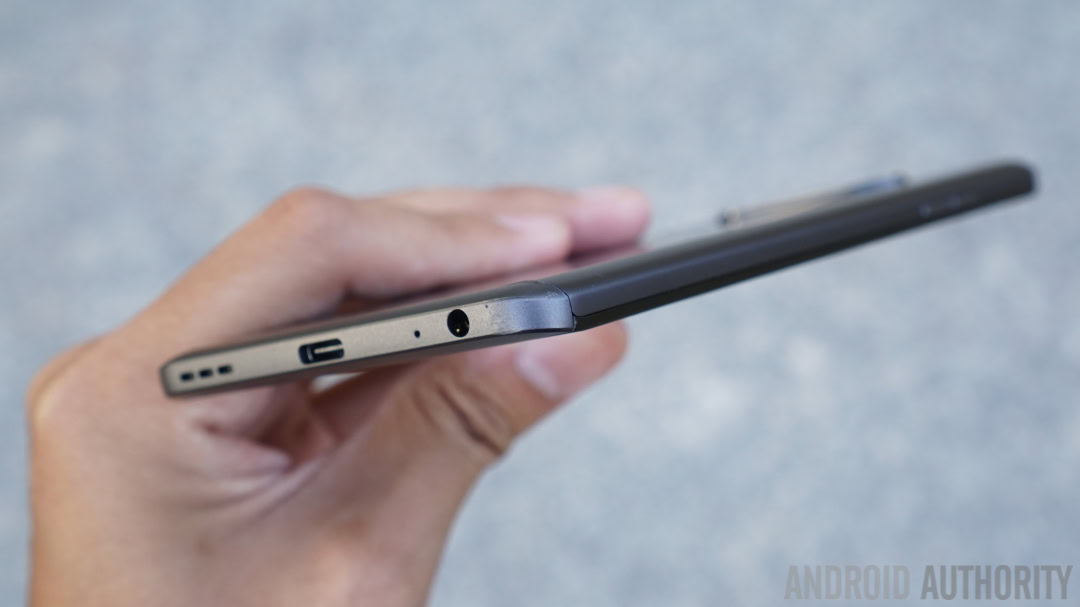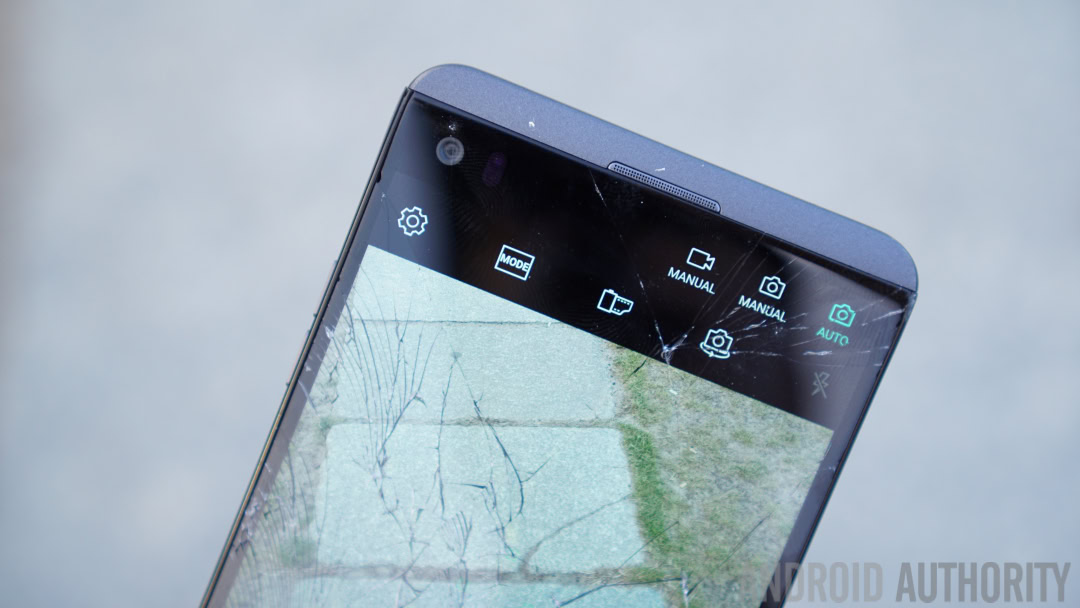Affiliate links on Android Authority may earn us a commission. Learn more.
LG V20 drop test: this is what it takes to break it
Published onSeptember 6, 2016

When a phone is advertised with military-grade impact resistance as one of its selling points, there’s little else to do but put those claims to the test. So it is with the new LG V20. With a MIL-STD-810G transit drop compliance rating, we set out to see just what it would take to break the LG V20, so you don’t have to.
You know the test: three drops, each from chest height. First on the device’s back, then on its edge and finally on its screen, where most damage usually occurs. The tests are not perfect, as each drop has a degree of uniqueness to it that is hard to recreate (something lab tests typically try to reduce). But this is real life and you never know what’s going to happen.

In our first batch of tests, conducted by Joshua Vergara at his chest height (conservatively 5 feet off the ground), we discovered a pattern. The LG V20’s metal battery cover popped off every time. The battery popped out in our first two tests (landing on its back and side) but stayed in place when dropping onto the device’s face, which isn’t surprising.

Other than some very minor scratches, the V20 came out unscathed. No cracks, no severe body damage, no operational problems once the battery was reinserted. We were actually quite surprised by how well this phone, which is made of metal – a material not typically great at absorbing shock – managed to handle fairly standard drop heights.
So we decided to ramp things up a little.
I’m a little taller than Josh but when I lift my arms above my head we’re talking a drop height well in excess of seven feet. This is clearly in the not-likely-to-happen-to-you category. There’s no universal standard to drop tests, but anything above seven feet onto the display glass has got to be considered pretty extreme.

We repeated the first two tests and found much the same result: the V20’s battery cover popped off and the battery fell out. But everything was perfectly fine once it was put back together again. A few more scuffs but nothing like you’d expect from multiple seven-foot impacts. Again, we were very impressed.
But when the final test came, glass-first from a height of at least seven feet, the V20 finally gave up the ghost. Or rather, the Gorilla Glass coating the display gave up. The phone itself still worked perfectly fine even after the entire front glass shattered. The good part of that is that it means all you need to do is replace the glass, not the digitizer (assuming one can be replaced on theV20 without replacing the other).

The display may generally be the most expensive thing to break on a smartphone, but if you can get away with only replacing just the glass and not the whole display, you’re in much better shape. We can’t guarantee that you’ll see similar results if you drop your V20 from such an unlikely height, but it’s reassuring to know that in our test at least, the V20 held up to its claims of impact resistance.
Do you think your phone could survive a seven-foot face-first drop? For more details on the V20, be sure to check out our LG V20 announcement post.